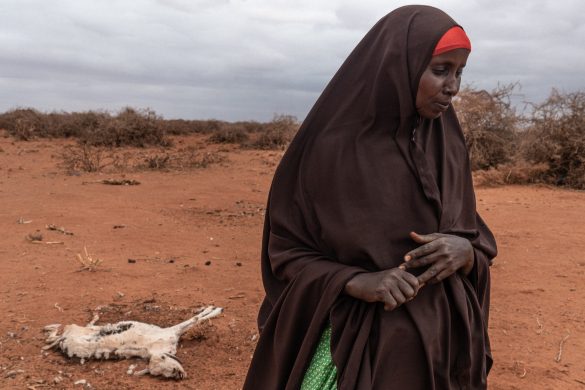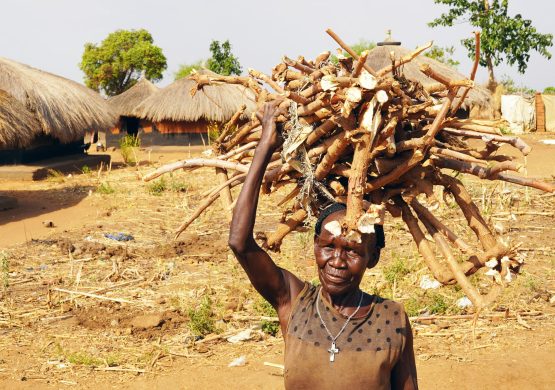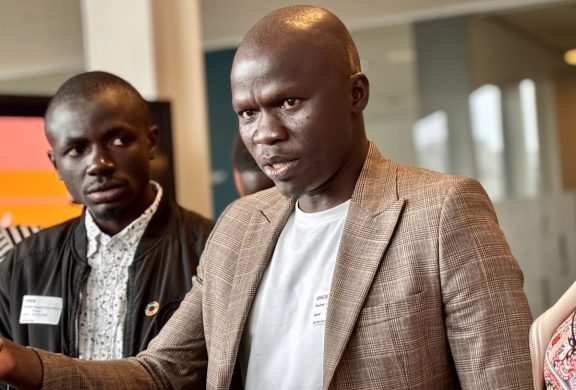JUBA, 8 February 2016 (FAO): South Sudan is facing unprecedented levels of food insecurity, as 2.8 million people — nearly 25 percent of the country's population — remain in urgent need of food assistance, and at least 40,000 people are on the brink of catastrophe, three UN agencies warned on Monday.
The Food and Agriculture Organization of the United Nations (FAO), the United Nations Children's Fund (UNICEF) and the World Food Programme (WFP) stressed that these numbers are particularly worrisome because they show an increase in hunger during the post-harvest period — a time when the country is traditionally most food secure.
The number of food insecure people is expected to peak during the coming lean season — traditionally worst between April and July — when food availability is lowest.
Humanitarian partners have released an update to the Integrated Food Security Phase Classification (IPC) analysis, which projects that the lean season will start early this year, and the hunger period will be longer than in previous years.
Nu begynder den tørre tid
The three UN agencies noted that the dry season, which is now beginning, could bring additional hardship to people facing the most severe levels of hunger.
People displaced in conflict-affected Unity State, who have been living on fish and water lilies to survive, are running out of their only remaining sources of food as the floods recede.
Livestock raiding has robbed many people of essential animal products like milk, which were their main means of survival during last year's lean season. Unless humanitarian assistance can reliably reach them during the dry season, they face catastrophe in the coming months.
For this reason, the UN agencies are calling for a speedy implementation of the peace agreement signed last year, and for unrestricted access to conflict areas to deliver much needed supplies to the most affected areas.
Også krise uden forkonfliktområderne
"It is not only areas directly affected by conflict that are food insecure — some 200,000 people in Northern Bahr El Ghazal and Warrap states have also seen their access to food deteriorate, owing to factors such as price inflation and market disruptions that are tied to the conflict," said Serge Tissot, Acting FAO Representative in South Sudan. "Prompt implementation of the peace agreement is absolutely critical to improving the food situation."
"During the dry season, we must make a massive pre-positioning effort so that we can continue assisting people after roads become impassable once the rains come," said WFP Country Director Joyce Luma. "Rising insecurity in Greater Equatoria is hampering delivery of humanitarian assistance through major routes, setting back our efforts to prepare and respond to people who are most in need."
Mange er fejlernærede
Today's IPC report also highlights the overall prevalence of emergency levels of malnutrition as an issue of grave concern. Malnutrition in South Sudan is attributed mostly to inadequate food consumption, along with other factors such as disease, dietary habits, as well as constrained health and nutrition service delivery.
"Families have been doing everything they can to survive but they are now running out of options," said Jonathan Veitch, UNICEF representative in South Sudan. "Many of the areas where the needs are greatest are out of reach because of the security situation. It's crucial that we are given unrestricted access now. If we can reach them, we can help them."
Working with a large number of international and local non-governmental organizations, FAO, UNICEF and WFP continue to deliver life- and livelihood-saving support under difficult circumstances.
FAO plans to assist 2.8 million people in producing food and protecting their livestock assets in 2016, compared to 2.4 million people reached last year. FAO emergency livelihood support includes crop kits, vegetable kits, fishing kits and livestock vaccinations of more than 5 million head of cattle.
UNICEF has set a target of treating more than 165,000 children for severe acute malnutrition (SAM) in 2016. Last year the number of children treated for SAM surpassed 144,000, which was a 53 percent increase over 2014.
WFP delivered food and nutrition assistance to some 3 million people across South Sudan in the last year, working with 87 NGO partners and using every tool at its disposal, including airdrops, river barges, cash-based transfers, local food purchases and specialized nutritious foods.















